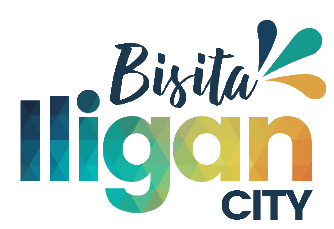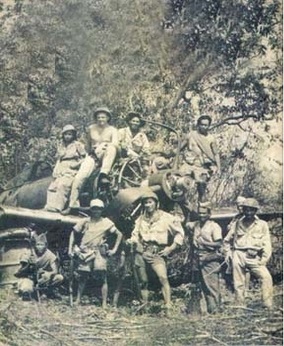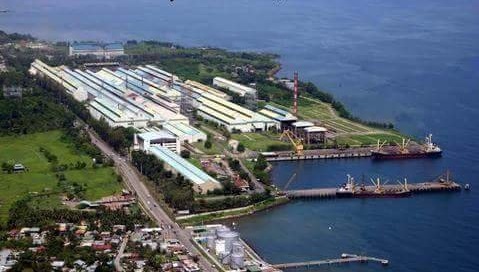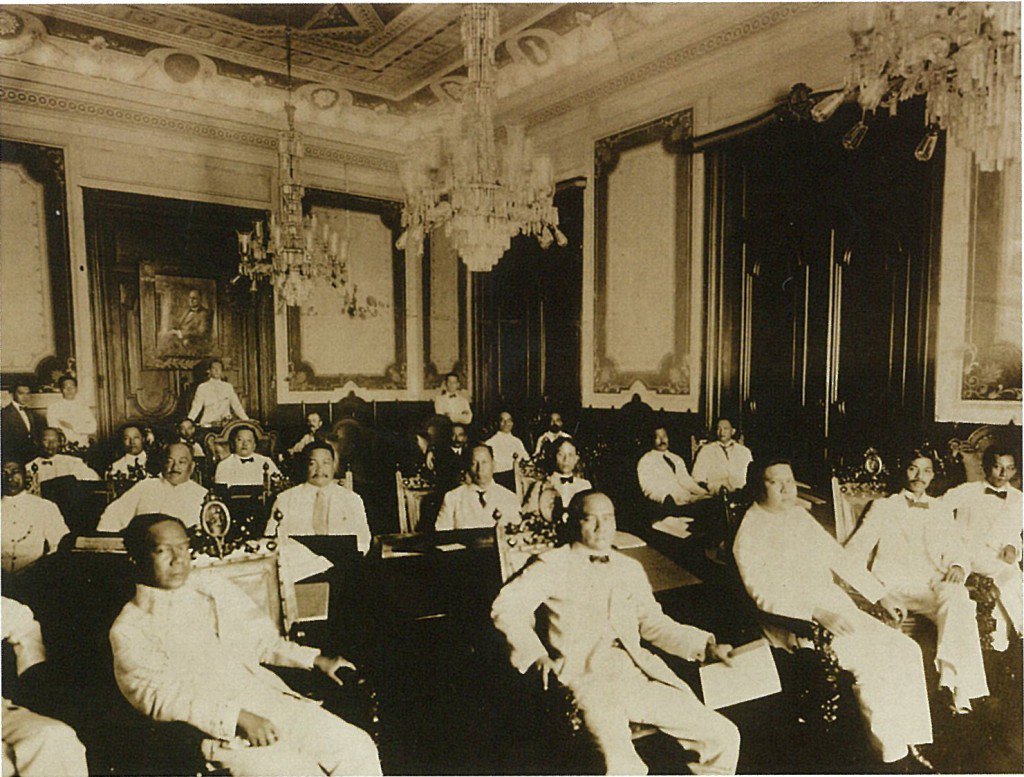
American Period (1900-1941)
Iligan City during the American Period
Iligan: One of the Biggest Towns
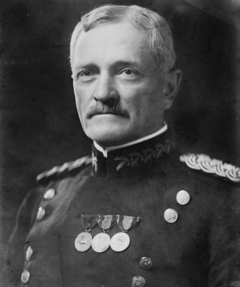
General John Pershing
General John J. Pershing,commander of the American Pacification Campaigns (1903)who destroyed the proud Kotas around Lake Lanao. Despite their defeat, the Maranaos made Pershing an honorary datu when he befriended them. (Saber) Iligan was already a town of the once undivided Misamis Province in 1832. However, it did not has an independent religious administration because it was part of Cagayan de Oro, the provincial capital. It was one of the biggest municipalities of Misamis Province. During the American colonial regime, Iligan was also one of the biggest towns of the once undivided province of Lanao. There was very little progress and development that occurred in the town during the Spanish period. This phenomenon can be traced to one of the causes—Moro hostilities. Muslim atrocities in Iligan and nearby places became one of the hindrances to the political and economic progress of the area.
Under the Spanish colonial administration, a few kilometers of roads were opened and a small wooden pier was constructed in the town. This pier could only accommodate small boats or light vessels. By the time the Americans came, all of these infrastructure projects were greatly damage or had already deteriorated badly. Iligan was originally inhabited by people who were called either taga-baybay(the coastal dwellers), taga-ilaya(the hinterland dwellers), or tagabukid(the highlanders). They were known by their geographical and territorial location. These people might have penetrate into this area using the four rivers of Iligan as highways. These early inhabitants of Iligan are known today as Higaonon.
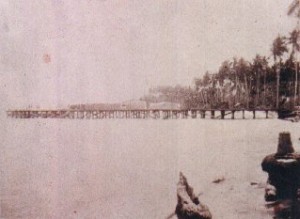
Iligan Wharf, Circa 1903
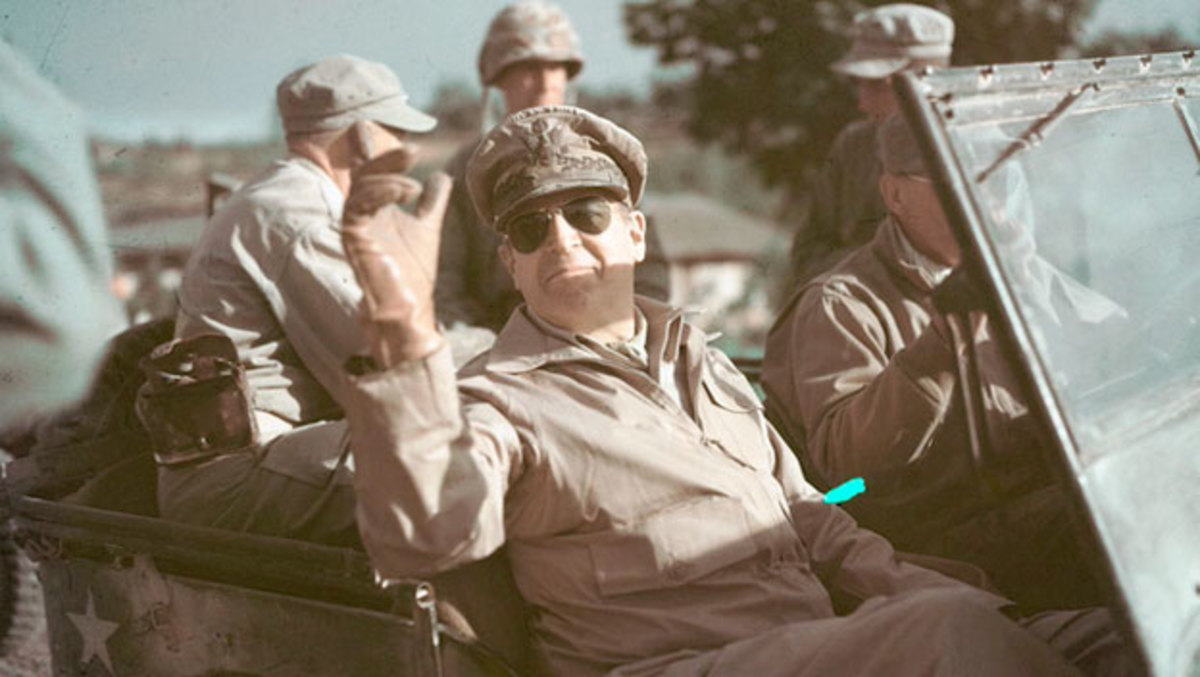
"The best luck of all is the luck you make for yourself."
-Douglas MacArthur
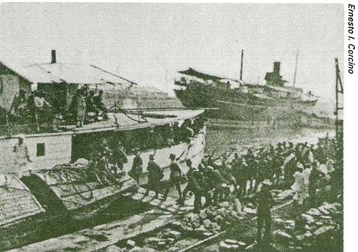
American troops in Pasig on their way to Mindanao
The American troops under the command of Capitain John Smith arrived in the placid waters of Iligan Bay one sunny morning in April 1900. The sight of the five big American battleships melted the spirit of resistance of the Iliganons. Father Antonio Hercas, the Spanish parish priest of Iligan advised the Captain-Mayor, Captain Hilarion Ramiro to surrender the town immediately. So when Capt. Smith arrived in Iligan, he was welcomed by Capitan Hilarion Ramiro with open arms. Gifts were distributed to the people and on that day 400 sacks of rice and hundreds of boxes of canned goods were given away. Immediately after their arrival in Iligan, Capt. Smith established a government of the new regime and put up a small military detachment a few kilometers south of the town and named it Camp Overton.

Washington Street (now Aguinaldo St.)
The Americans were very friendly to the Iliganons, and the latter understood that no harm was intended on them. In fact, they looked to the Amercans for protection against the attacks of the Moros. Because of this the people willingly recognized the United States sovereignty over them.
Iligan was a very small town when the Americans arrived. The streets were so narrow that they could not accommodate two cars side by side. It had only few principal streets. These streets were Washington Street (now Gen Aguinaldo St.). Commercial Street(now Quezon Avenue), and Iglesia Street. The rest were just trails enough for the passage of people and animals.
In 1903, the Philippine Commission directed the first census of the Philippines Islands. Iligan’s population then was only 3,269 including that of Lugait its lone barrio and now a town of Misamis Oriental. The population of the poblacion was 2,872 and Lugait had 397. In the 1918 census, the population had increased to 4,669. There were 2,459 males and 2,210 females who were categorized as Roman Catholics; Aglipayans, 100 males and 9 females; and Muslims, 100 males and 52 females. This religious census in 1918 showed that Iligan was predominantly inhabited by the Christian and not Muslim Filipinos.
Colonization had greatly influenced the Iliganons in almost all aspects of life–religious, political and socio-economic. American colonization played an important role in the development and progress of Iligan. During the Spanish regime, the people became Hispanized and when the Americans came, the people were Americanized. The American policy of populating Mindanao in order to develop its natural resources, attracted people from the north and central Philippines to come to Iligan. In the census of 1939 Iligan’s population had increased to 28,373. This population increase from 1903 to 1939 could be attributed to the developments that occurred during the American occupation as peace and order conditions improved. Added to this were the opening of more roads and wharves, and the arrival of modern transportation and communication facilities. Thus, more migrants from other places of the country came to Iligan.
Iligan improved rapidly under the American colonial administration. A number of buildings were constructed. Old dilapidated houses were repaired. A few modern and beautiful houses were erected. The small pier was rehabilitated and opened to the public for business. The first school building was constructed at the present site of the Iligan City. Central School in 1903. The post office was also constructed in 1903.
Iligan’s postmaster a certain C.W. Want was authorized to issue and pay money order by the Bureau of Post. In 1905, C.W. Want was replaced by Candido Molo, a Filipino.
There were public investments such as opening of more roads and telephone lines. These were carried on poles from Camp Overton in Iligan to Camp Keithly in Marawi and were installed into metallic circuits in direct line of communication. The Iligan-Lake Lanao road was constructed by the American troops. The Philippine Commission had appropriated three hundred thousand pesos (P300,000.00) for the completion of this road. The old wooden bridges were repaired. The suspension bridge over the Agus River was constructed. In 1919, the Americans constructed woodpile hurdles at the bank of Iligan River to prevent further erosion. This was a 50-meter long hurdle of two rows of woodpile.
Economic development was one of the major concerns of the Americans for the Moro Province. This province established in 1903 was composed of five districts: Zamboanga, Lanao, Cotabato, Holo(Sulu) and Davao. In order to develop its rich natural resources, the people from other parts of the country were encouraged to come to Iligan to acquire the government’s subdivided public lands. The government also encouraged the cultivation of sugar, abaca, and rice on a large scale. Among the many Iliganon farm owners were Mr. Carlos Ong, a Chinese who had a large sugar cane plantation, the Ramiro family which also owned a large tract of sugarland located between Tambo and Barangay Tibanga; the Sabayle family which had a large coconut plantation at the present site of Barangay Saray and Tibanga up to Barangay Santiago. The family of Miguel Sheker, who was himself a Jew, had its sugarcane plantations between Tambo, Bayug and Tibanga.
Aside from the cultivation of export crops on a large scale, the Americans also promoted trade and commerce in Iligan. In 1918, there were already ten big business establishments mostly opened along Commercial Street(now Quezon Avenue). They were owned and operated by American, Chinese, Filipino and Japanese businessmen. These business establishments had a total capitalization of P 776,400 and a total cost of production that amounted to P 45,395 each.
In the 1920s Iligan had already experienced modernization. Mr. Miguel Sheker had put up a land transportation company so did Mr. Constancio Jariol. Hotels, restaurants, big stores, and lodging houses were also opened. A traveling show entertained the viewing public. Most of the restaurants were owned by the Chinese. The Borja’s put up the town’s first electric plant in the 1930s. With the availability of electricity, Mr. Miguel Sheker was able to purchase machinery for his sugar mills. Mr. Zuberri, a Spanish businessman, put up a big store near the pier. It attracted visitors from other places who came to Iligan because of his delicious homemade sardines, which became Iligan’s special delicacy.
Mr. Sy Ponso put up the Century Theater. Local newspaper were also founded in 1929. The first local news paper in circulation was the Lantaca. It was followed by the Agong in 1930, and the Sidlakan in 1931. Mr. Jose Teves was the first editor of these local papers. They were printed in the printing press owned by Mr. Benjamin Andrada. The newspapers were printed in Tagalog, English and Cebuano languages.
In the 1930s Iligan’s economic condition was so stable and prosperous that there were no beggars roaming the streets. Peace and order conditions were very much improved. The Moros were already friendly to the Christians and even in the remotest parts of the town, they were hospitable to strangers.
In 1903, the Moro Province was created. Iligan, because of its Moro residents was taken away from the Misamis Province. Then Iligan became the capital of the Lanao District and seat of the government where the American officials lived and held office. Later in 1907 the capital of the Lanao District was transferred to Dansalan.
The municipal code of the Moro Province provided a government for each municipality with a presidente, vice presidente and a municipal council composed of twelve (12) councilors. The presidente was appointed by the governor of the Moro Province. The vice-presidente and half of the councilors were appointed by the district governor. The presidente was the chief executive of the municipality and supervised the discharge of the official duties of all his subordinates.
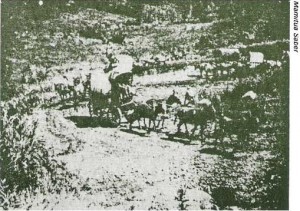
U.S. Army Convoy ( From Iligan to Lake Lanao, 1904)
Leon Fernandez was appointed first presidente of Iligan when Hilarion Ramiro’s term ended in 1900. He was a Spaniard but his wife was an Iliganon. He was replaced by Capt. John Smith in 1902 who assumed dual responsibilities, civil and military. In 1907, William Murphy replaced Capt. Smith as presidente. After 1907, the district governor of Lanao through the approval of the Legislative Council of the Moro Province appointed all Filipino presidentes and municipal council members of Iligan.
Between 1908 and 1917, seven Iliganons were appointed as presidente of Iligan, to wit: – Bernabe Duran (1908-1909) – Regino Abestillas(1909-1910) – Dionesio Vidal(1910-1911) – Nicolas Abragan(1911-1914) – Martiniano Actub(1914-1916) – Antero Cruz(1916-1917) – Eustiquio Adeva(1917-1922) Adeva was allowed to serve until the first general election in 1922 as provided for in the Jones Law of 1916.
Iligan had its first election in 1922 for the office of the presidente. In this election, the candidates for presidente were Jorge Ramiro Sr. and Rafael Villanea. Their political parties were indentified as either Ramiro Party or Villanea Party. On election day, each party fetched their voters from the barrios. Some of these barrios were forty kilometers away from the voting centers. The election day passed without disturbances and Jorge Ramiro Sr. won as Iligan’s presidente over his opponent Rafael Villanea. Jose Nadorra Sr. also won as vice-presidente against his opponent Eusebio Ramos. The winning councilors were Vidal Sade, Segundo Villanea, Gabriel Gabtalan, Silverio Ramos, Eulalio Nasucal and Carlos Leonar.
Another election was held in 1925 and Jorge Ramiro Sr. was reelected as presidente. His vice-presidente was Dioscorro Villaladia. In 1928, Jorge Ramiro Sr. ran for presidenté for the third time but he lost in the election. against Gregorio Nanaman. However, Nanaman served Iligan as presidente for only eight (8) months because he voluntarily relinquished his office. He was so preoccupied with his own business, which took him out of town most of the time that he could no longer attend to his duties as presidente. Mr. Constancio Jariol, the vice-presidente elect was appointed by the governor of Lanao, John H. Heffinton to replace Gregorio Nanaman of February 25, 1929. In 1931, another election was held in Iligan, Miguel Obach was elected as presidente against Silverio Ramos.
Under the Commonwealth Government, election was held in 1935. Jorge Ramiro Sr. was again elected as presidente of Iligan. In 1937, another election took place and Jorge Ramiro Sr. was reelected. The municipal head was no longer called presidente but mayor. This is because the executive officials of the Philippine Commonwealth Government inaugurated in November 1935 were called president and vice-president.
In 1940 the last election before the outbreak of the Second World War held in Iligan. Leo Garcia won against incumbent mayor, Jorge Ramiro. Leo Garcia took his oath of Office on January 1, 1941 and served Iligan as mayor up to the end of the war.
The Japanese invaded Iligan on May 5, 1942. The Japanese occupation force, numbering about 400 to 500 soldiers did not meet any fierce resistance because the demoralized United States Armed Forces in the Far East (USAFFE) soldiers had already left.
